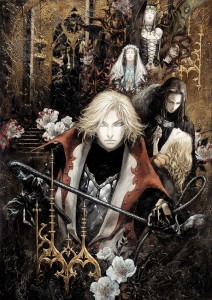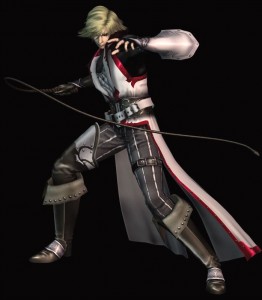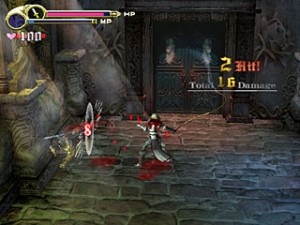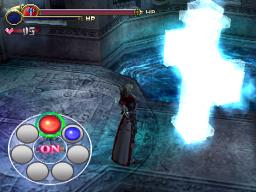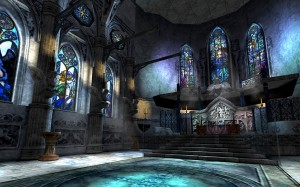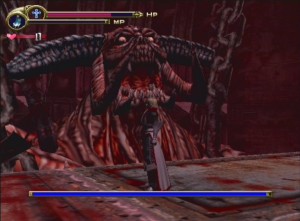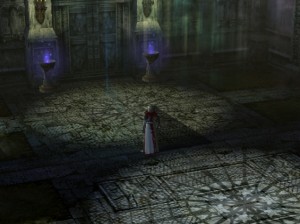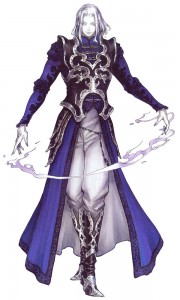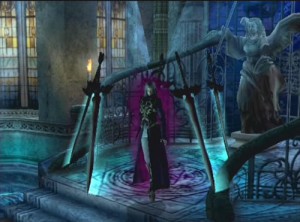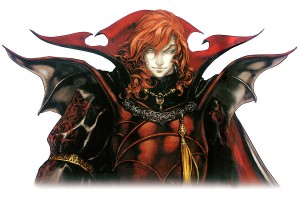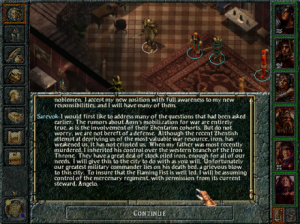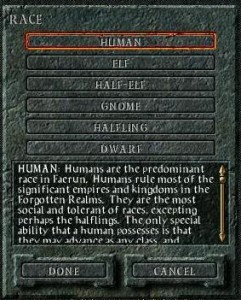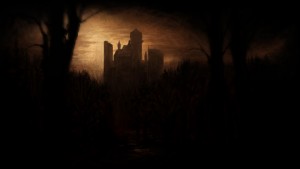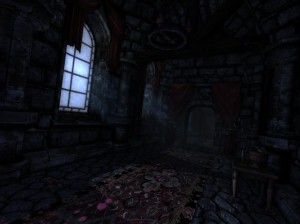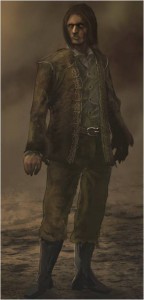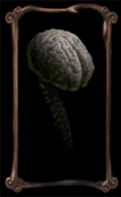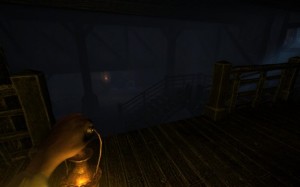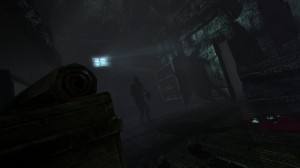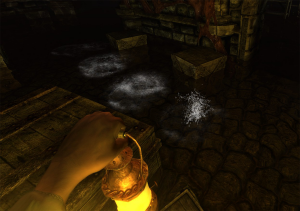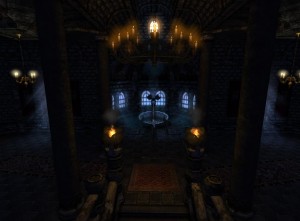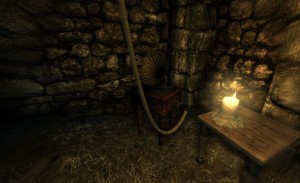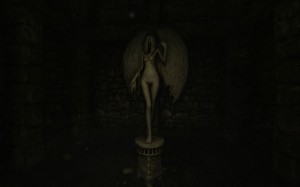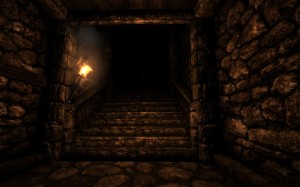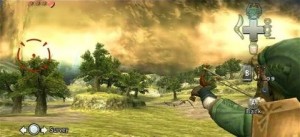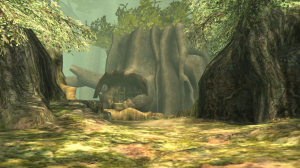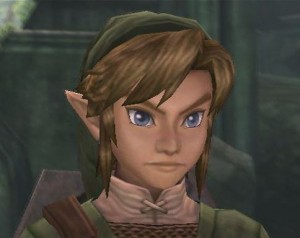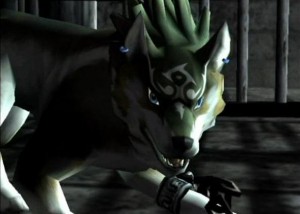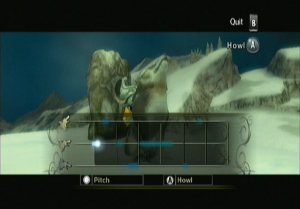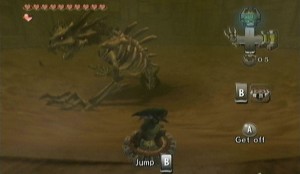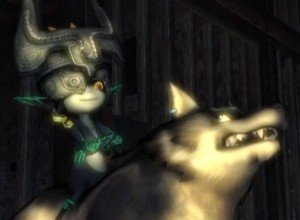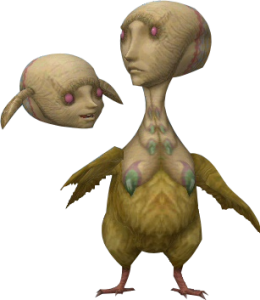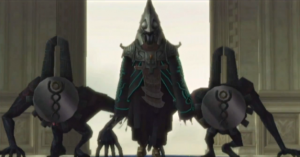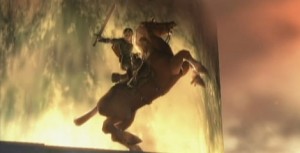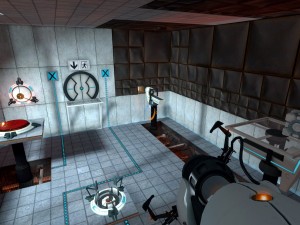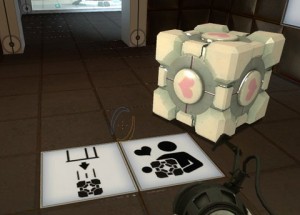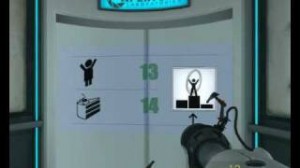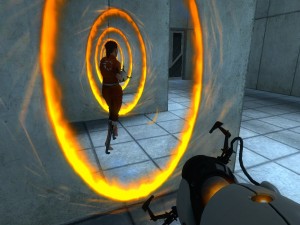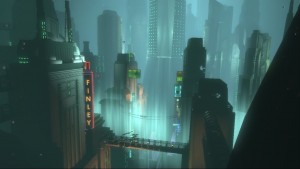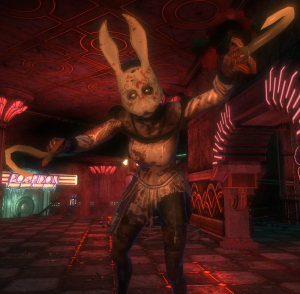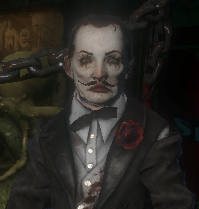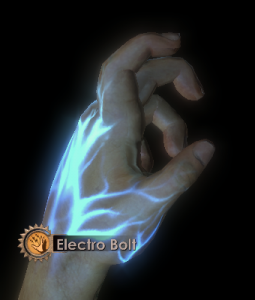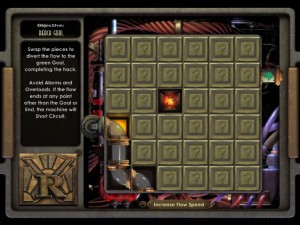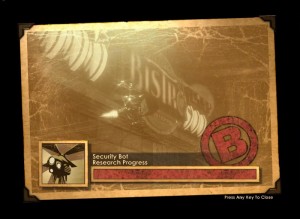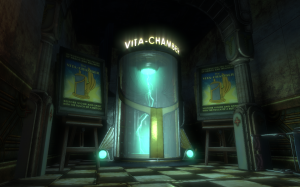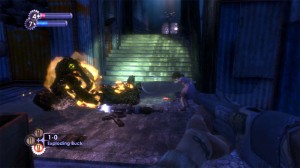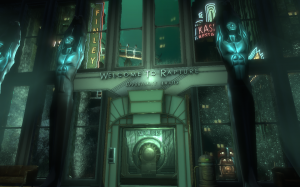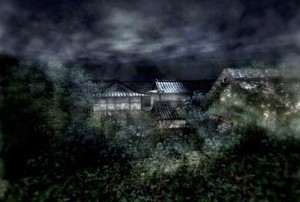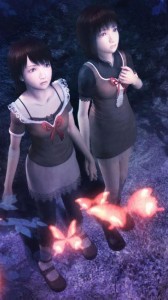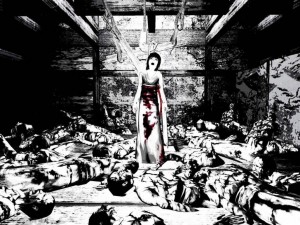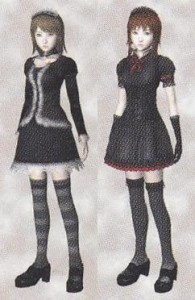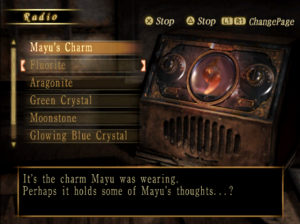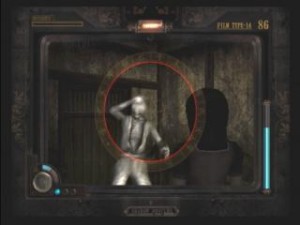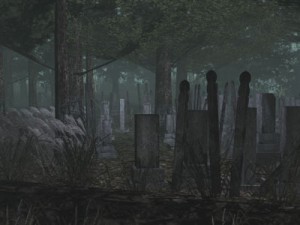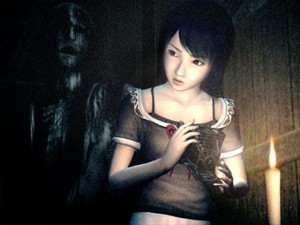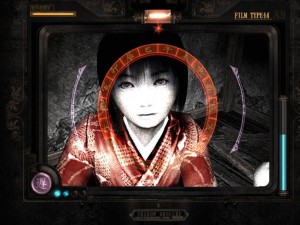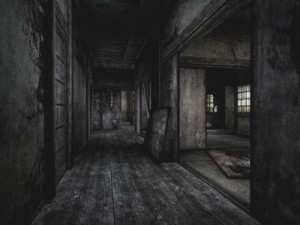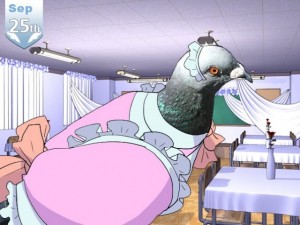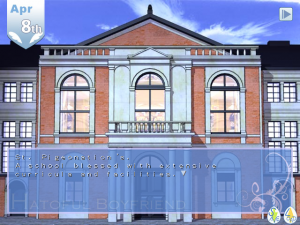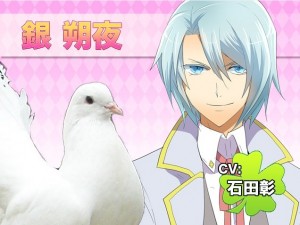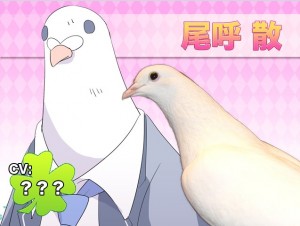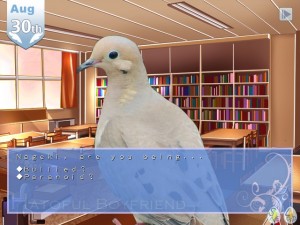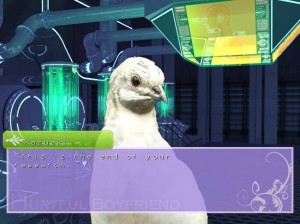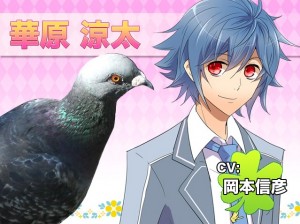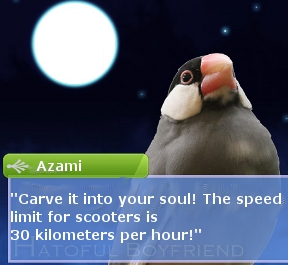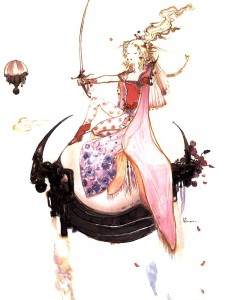The culprit: Prince of Persia: The Sands of Time (PlayStation 2, GameCube, Xbox, GameBoy Advance, PlayStation 3, PC)
Having played and enjoyed the Assassin’s Creed games, I became curious about Prince of Persia. Ubisoft took over the series from the PS2 trilogy onwards, and I’d heard that it involved similar gameplay to AC. So I got my grubby mitts on its HD re-release for the PS3 and got cracking on The Sands of Time.
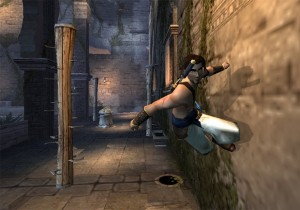 Shocking as it may sound, the game’s protagonist is the nameless Prince of Persia. The namelessness is actually rather jarring and only becomes more so as the series progresses. I assume that this was a way to encourage player identification, but it’s just odd that no one ever calls him by name. That aside, it’s easy to see the link with AC. The Prince is an accomplished athlete, far more so than either Altaïr or Ezio. He has some rather spectacular stunts at his disposal, the most famous of which is probably the ‘wall run’. This exaggerated acrobatic prowess fits in with the series fairytale-like atmosphere. The game is even presented as a framed narrative: a tale being told by the Prince himself to an (at first) unknown recipient. Which, I must admit, is a rather clever device. If you ever get the Prince
Shocking as it may sound, the game’s protagonist is the nameless Prince of Persia. The namelessness is actually rather jarring and only becomes more so as the series progresses. I assume that this was a way to encourage player identification, but it’s just odd that no one ever calls him by name. That aside, it’s easy to see the link with AC. The Prince is an accomplished athlete, far more so than either Altaïr or Ezio. He has some rather spectacular stunts at his disposal, the most famous of which is probably the ‘wall run’. This exaggerated acrobatic prowess fits in with the series fairytale-like atmosphere. The game is even presented as a framed narrative: a tale being told by the Prince himself to an (at first) unknown recipient. Which, I must admit, is a rather clever device. If you ever get the Prince 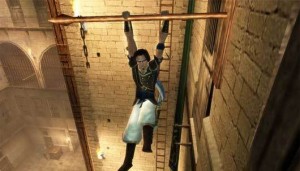 killed, the Game Over screen will be accompanied by a comment along the lines of “no, no, that’s not how it happened”, as if the narrator had had a sudden lapse of memory, or as if his interlocutor had tried to butt into the story. Similar comments accompany pausing or saving, thus integrating these actions into the narrative.
killed, the Game Over screen will be accompanied by a comment along the lines of “no, no, that’s not how it happened”, as if the narrator had had a sudden lapse of memory, or as if his interlocutor had tried to butt into the story. Similar comments accompany pausing or saving, thus integrating these actions into the narrative.
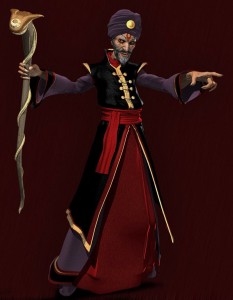 The story begins as the Prince’s father, King Shahraman, allies himself with the traitorous Vizier of a small Indian kingdom. He helps Shahraman to sack the local Maharajah’s palace and retrieve the Sands of Time from his treasury. These supposedly confer immortality to whoever can control them (which is the Vizier’s goal, as he appears to be terminally ill), but turn all other living things into sand monsters. The Sands are contained within a giant hourglass and can be unlocked by means of a dagger, which also protects its user from the Sands’ corruptive power. Additionally, a staff and a medallion have the same effect. The former is in the possession of the Vizier, while the latter is worn by the Maharajah’s captured daughter, Farah. Prevented by the Prince from obtaining the coveted dagger, the Vizier tricks him into unleashing the Sands when the Persian army stops in the friendly kingdom of Azad. This partially destroys the palace of Azad and transforms all its inhabitants, except the Prince, Farah and the Vizier, who absconds with the hourglass to the top of the highest tower. The Prince must then make his way through the palace, solving puzzles, evading deadly traps and fighting sand creatures to get his revenge. Except that this also brings the dagger within the Vizier’s reach…
The story begins as the Prince’s father, King Shahraman, allies himself with the traitorous Vizier of a small Indian kingdom. He helps Shahraman to sack the local Maharajah’s palace and retrieve the Sands of Time from his treasury. These supposedly confer immortality to whoever can control them (which is the Vizier’s goal, as he appears to be terminally ill), but turn all other living things into sand monsters. The Sands are contained within a giant hourglass and can be unlocked by means of a dagger, which also protects its user from the Sands’ corruptive power. Additionally, a staff and a medallion have the same effect. The former is in the possession of the Vizier, while the latter is worn by the Maharajah’s captured daughter, Farah. Prevented by the Prince from obtaining the coveted dagger, the Vizier tricks him into unleashing the Sands when the Persian army stops in the friendly kingdom of Azad. This partially destroys the palace of Azad and transforms all its inhabitants, except the Prince, Farah and the Vizier, who absconds with the hourglass to the top of the highest tower. The Prince must then make his way through the palace, solving puzzles, evading deadly traps and fighting sand creatures to get his revenge. Except that this also brings the dagger within the Vizier’s reach…
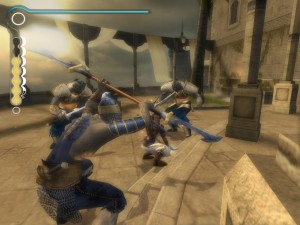 The dagger is the basis for the game’s combat and gameplay. It contains a small portion of the Sands, which allows its user to manipulate time, slowing it down, stopping it or rewinding it for a short period. All of this functions with the help of sand tanks and power tanks. Sand tanks are indicated by a string of circles at the top left of the screen, which become yellow when full. These are used for rewinding time (one tank per rewind), or for a special attack which freezes all enemies on the screen. This bad boy requires six sand tanks, but also six power tanks. These are indicated by crescent shapes next to the sand tanks and are used for all other time-related special attacks. Sand tanks and power tanks can be replenished either by absorbing sand from the enemies the Prince vanquishes or from sand fields, which look like small puffs of sand dotted around the palace. Each sand field fills all power tanks and all sand tanks, while
The dagger is the basis for the game’s combat and gameplay. It contains a small portion of the Sands, which allows its user to manipulate time, slowing it down, stopping it or rewinding it for a short period. All of this functions with the help of sand tanks and power tanks. Sand tanks are indicated by a string of circles at the top left of the screen, which become yellow when full. These are used for rewinding time (one tank per rewind), or for a special attack which freezes all enemies on the screen. This bad boy requires six sand tanks, but also six power tanks. These are indicated by crescent shapes next to the sand tanks and are used for all other time-related special attacks. Sand tanks and power tanks can be replenished either by absorbing sand from the enemies the Prince vanquishes or from sand fields, which look like small puffs of sand dotted around the palace. Each sand field fills all power tanks and all sand tanks, while 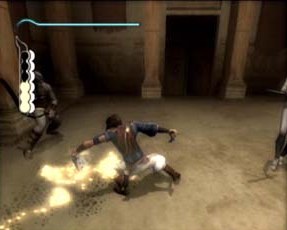 absorbing sand from an enemy fills one sand tank at a time. Once all tanks are full, it begins filling half a power tank at a time. Absorbing eight sand fields will create a new sand tank, while absorbing sand from 16 enemies will create a new power tank (although you can only have as many as you do sand tanks). Overall, this is a rather redundant and convoluted system, and subsequent games in the series wisely get rid of power tanks altogether.
absorbing sand from an enemy fills one sand tank at a time. Once all tanks are full, it begins filling half a power tank at a time. Absorbing eight sand fields will create a new sand tank, while absorbing sand from 16 enemies will create a new power tank (although you can only have as many as you do sand tanks). Overall, this is a rather redundant and convoluted system, and subsequent games in the series wisely get rid of power tanks altogether.
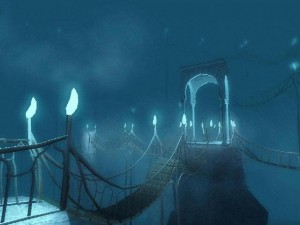 Other gameplay elements include fountains…or any body of water, really. You see, drinking water recovers the Prince’s health. A good steak would’ve made more sense to me, but what do I know? There are also several hidden areas (recognisable as corridors hung with draperies) which all lead the Prince to the same mysterious fountain, then inexplicably vanish. Drinking from that fountain increases his maximum health. Finally, there are also sand clouds, which enable the Prince to save, but also provide a sped-up flash-forward of his progression through the next area. And while these are accurate at first, they gradually become disturbingly less so, showing the Prince falling to his death and so on.
Other gameplay elements include fountains…or any body of water, really. You see, drinking water recovers the Prince’s health. A good steak would’ve made more sense to me, but what do I know? There are also several hidden areas (recognisable as corridors hung with draperies) which all lead the Prince to the same mysterious fountain, then inexplicably vanish. Drinking from that fountain increases his maximum health. Finally, there are also sand clouds, which enable the Prince to save, but also provide a sped-up flash-forward of his progression through the next area. And while these are accurate at first, they gradually become disturbingly less so, showing the Prince falling to his death and so on.
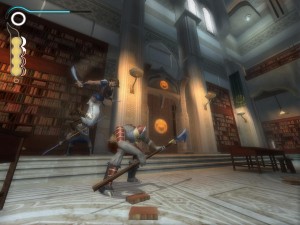 As far as combat is concerned, the Prince fights with a sword in one hand (which he’ll be able to upgrade twice over the course of the game) and the dagger in the other. He can block enemy attacks and has several combos at his disposal. But by far the two most effective tactics are making him vault over enemies to stab them in the back, or propelling him from a wall to knock them over.
As far as combat is concerned, the Prince fights with a sword in one hand (which he’ll be able to upgrade twice over the course of the game) and the dagger in the other. He can block enemy attacks and has several combos at his disposal. But by far the two most effective tactics are making him vault over enemies to stab them in the back, or propelling him from a wall to knock them over.
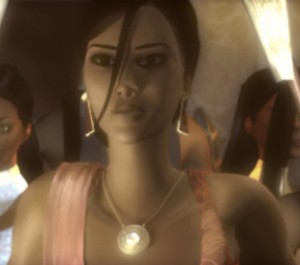 The Prince is also eventually joined by Farah, as they would both like to do very nasty things to the Vizier, and the dynamic between them is one of the game’s stronger points. She’s a pretty little thing, and he’s not half bad himself, even allowing for the somewhat cartoonish graphics, but they’re both rather pig-headed, so expect belligerent attraction expressed through abundant bickering. That aside, Farah also provides assistance in various ways: not only will she help in combat with her bow, but she’s also skinny enough to fit through various cracks and holes which are inaccessible to the Prince, thereby helping in exploration as well. Although he’ll still spend a good deal of his time opening doors for her. You also need to make sure the enemies don’t swarm her, as, if she dies, it’s Game Over. Moreover, she’s entirely capable of accidentally nailing the Prince with an arrow if he stands in her way. The joys of a sidekick, I tell you.
The Prince is also eventually joined by Farah, as they would both like to do very nasty things to the Vizier, and the dynamic between them is one of the game’s stronger points. She’s a pretty little thing, and he’s not half bad himself, even allowing for the somewhat cartoonish graphics, but they’re both rather pig-headed, so expect belligerent attraction expressed through abundant bickering. That aside, Farah also provides assistance in various ways: not only will she help in combat with her bow, but she’s also skinny enough to fit through various cracks and holes which are inaccessible to the Prince, thereby helping in exploration as well. Although he’ll still spend a good deal of his time opening doors for her. You also need to make sure the enemies don’t swarm her, as, if she dies, it’s Game Over. Moreover, she’s entirely capable of accidentally nailing the Prince with an arrow if he stands in her way. The joys of a sidekick, I tell you.
The game has several other annoying aspects. First of all, there’s the Prince, who, to be entirely honest, is a bit of a jackass. He’s proud, rash, snobbish and more than a little whiny. The snobbishness wears off a bit, but the rest remains, so he’s not exactly  the most likeable hero ever. Also, he inexplicably ends the game topless. You’ll see him rip off a sleeve, then another, then the rest of his shirt (including his chest-guard) for seemingly no reason. Presumably, it’s because his clothes are torn, but surely, going bare-chested into combat is hardly going to help? Another drawback is repetitiveness. It’s not a very long game, but while the puzzle solving mostly keeps you on your feet, the combat does get rather old after a while. One other thing that irritated me considerably was the lack of subtitles. I don’t know what it is about the sound in this game, but it’s sometimes very difficult to hear what some of the characters are saying (the Vizier especially swallows a lot of his words), and there’s no way to remedy that except trying to fiddle with the background music volume. You’d think this could have been resolved in the HD remake, but apparently not.
the most likeable hero ever. Also, he inexplicably ends the game topless. You’ll see him rip off a sleeve, then another, then the rest of his shirt (including his chest-guard) for seemingly no reason. Presumably, it’s because his clothes are torn, but surely, going bare-chested into combat is hardly going to help? Another drawback is repetitiveness. It’s not a very long game, but while the puzzle solving mostly keeps you on your feet, the combat does get rather old after a while. One other thing that irritated me considerably was the lack of subtitles. I don’t know what it is about the sound in this game, but it’s sometimes very difficult to hear what some of the characters are saying (the Vizier especially swallows a lot of his words), and there’s no way to remedy that except trying to fiddle with the background music volume. You’d think this could have been resolved in the HD remake, but apparently not.
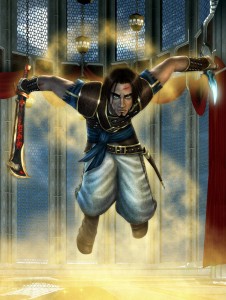 Still, I found this to be an enjoyable, spirited romp. The graphics are colourful and stylish, Stuart Chatwood’s music has flair and a nice Middle-Eastern vibe (special mention goes to the ending credits song “Time Only Knows”), and overall, the game does an honourable job of what it sets out to do. What’s more, the ending provides a surprising little twist. Well, unless you’ve seen the film based on the game. Then you know what the twist is. But if you have to decide between the two, pick the game. It’s just better, Jake Gyllenhaal’s abs and Gemma Arterton’s curves be damned. Although Ben Kingsley does look remarkably like the Vizier.
Still, I found this to be an enjoyable, spirited romp. The graphics are colourful and stylish, Stuart Chatwood’s music has flair and a nice Middle-Eastern vibe (special mention goes to the ending credits song “Time Only Knows”), and overall, the game does an honourable job of what it sets out to do. What’s more, the ending provides a surprising little twist. Well, unless you’ve seen the film based on the game. Then you know what the twist is. But if you have to decide between the two, pick the game. It’s just better, Jake Gyllenhaal’s abs and Gemma Arterton’s curves be damned. Although Ben Kingsley does look remarkably like the Vizier.

